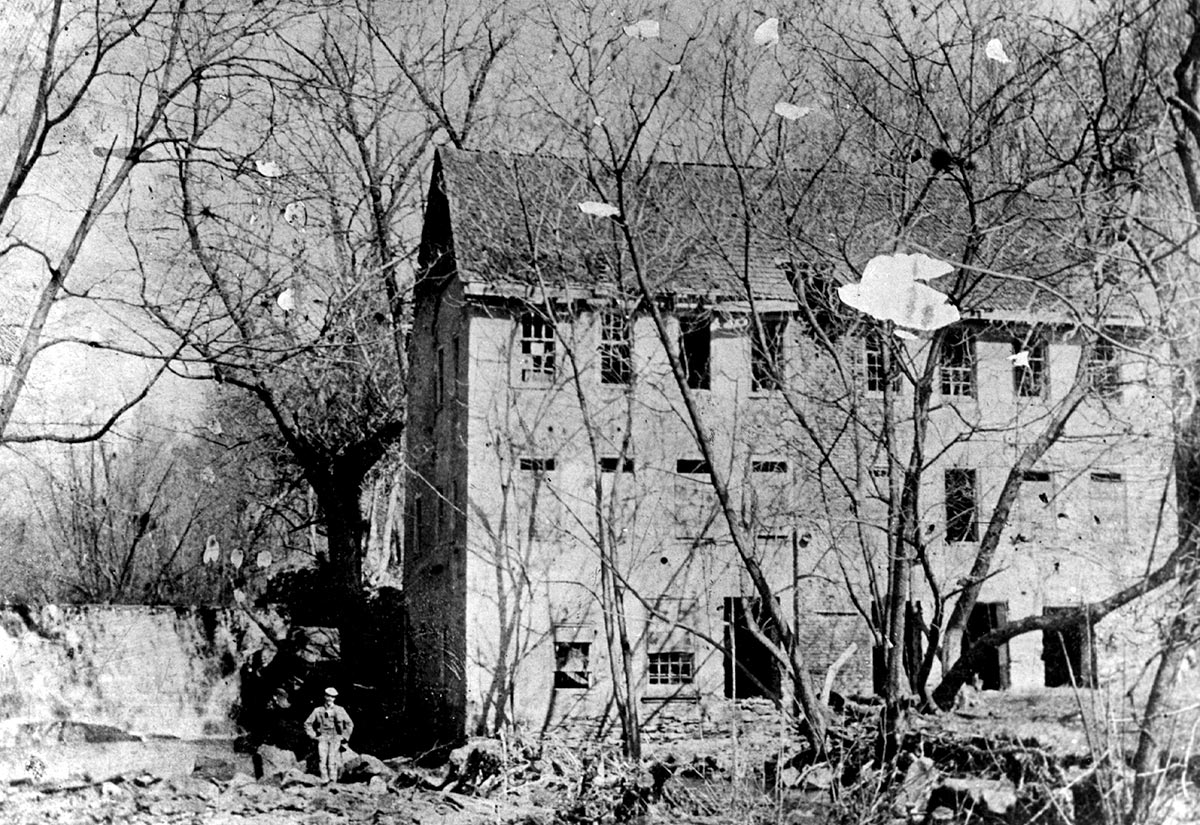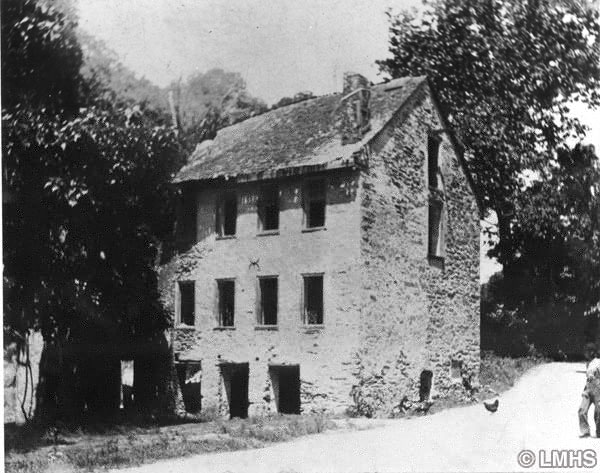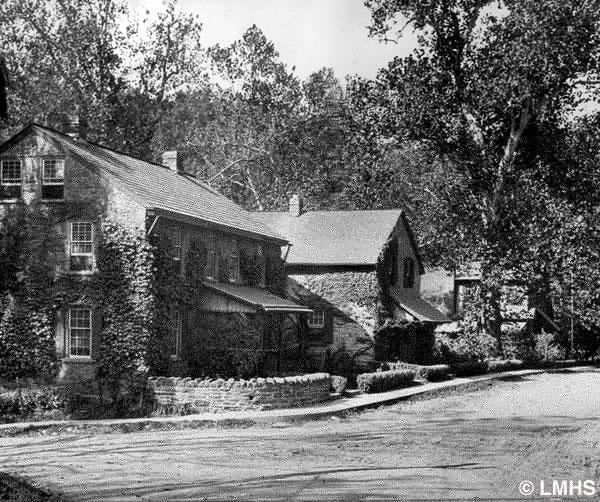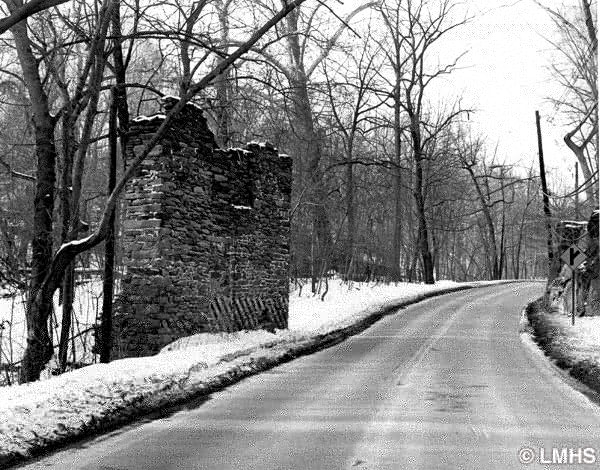The Earliest Mill
Roberts Mill
On Old Gulph Road in Gladwyne, where Mill Creek spills over a natural fall, John Roberts III built a grain mill in 1746. Measuring 28 by 40 feet, it presumably stood on the site selected by his grandfather, John Roberts, for “The Wain,” the first mill established for the Welsh settlers of the area after their arrival in 1683. What remains of the historic Roberts mill at the millenium is merely the east end wall. But the lintel over a filled-in doorway still bears the faint inscription “J & JR 1746.”
John Roberts III of Lower Merion and Jane Downing of East Caln Township in Chester County married at a Quaker public meeting at Uwchlan on the first day of the fourth month of 1743. Their years of success in marriage and business is marked by the birth of 12 children between 1743 and 1768 and the growth of John Roberts’ land holdings along Mill Creek to the Schuylkill. By 1774 these amounted to 420 acres, and taxation that year was on one grist and saw mill and one paper mill.





To accommodate his family, in 1752 he built a large, stone addition in a typical Welsh architectural tradition to the existing small stone house on the hillside above the mill started by his grandfather. The Revolution and Roberts’ role as a Quaker pacifist brought the flourishing career and life of this wealthy citizen to a sad end in November 1778. Roberts was tried and hanged for treason in Philadelphia, having been accused of assisting General Howe’s army. His mill sites were confiscated and sold to new owners, but they established the industrial network for another 100 years of milling on the creek.
